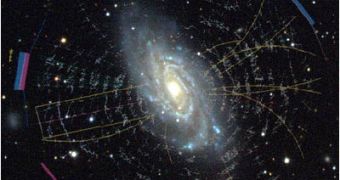The first man ever to consider the possibility of multiple universes was Hugh Everett III, a brilliant American mathematician and quantum physics theorist. Later he became a successful defense contractor with access to the nation's most sensitive military secrets, after which his live turned tragic as he became a notorious chain smoking alcoholic and died prematurely.
The theory developed by Hugh Everett III represents an interpretation of the quantum mechanics which proposes that there is a possibility that our universe is not the only one, but there are a number of universes, all 'identical', but in different states.
Since then, several theories have emerged regarding the possibility of such parallel universes, each with different outcomes regarding all possible combinations of reality, meaning that in a parallel universe you might be a doctor, or in others you haven't even been born.
The work which led to this famous assumption is a result of the direct implication of cosmological observations. Max Tegmark classified the possible types of universes using the terminology of Ellis, Koechner and Stoeger, which splits the multiple universes in two domains: multi-domain universes and multiverses.
The multi-domain universes are classified in Level I or open multiverse and Level II. The Level I represents a prediction of the cosmic inflation and is an infinite ergodic universe, which must contain Hubble volumes which present all the initial conditions, including at least an identical copy of a person outside the Hubble volume of the observer.
The Level II multi-domain considers the possibility of the existence of a number of open multiverses, each with different physical constants. This kind of multi-domain is called a Bubble universe which involves the creation of universes from a type of quantum 'foam' from an original parent universe. The energy fluctuations of this quantum 'foam' are believed to create tiny bubbles and wormholes. If the energy fluctuation is not large enough, a tiny bubble may form, expand a little, then contract back and disappear. However if the energy fluctuation is greater than a critical value, a tiny bubble universe may form in the parent universe and experience a long-term expansion to allow matter and large-scale structures such as galaxies to form.
Multiverses may imply two classifications, the Level III, the many-world interpretation of Hugh Everett, which states the possibility of multiple universes existing, each 'identical', but in possible different states.
The Level IV suggests that a multiverse might exist within the eleven dimensional extensions of the string theory, known as the M-theory. The universe and other universes might have been created as a result of collisions between branes in an eleven dimensional space, which could have different laws of physics.
Critics says that none of the theories explaining the possibility of multiple universes can be tested, therefore are unfalsifiable, since none of the theories present the possibility of communicating information between two universes.
Others argue that there are no parallel universes, but rather a single one, in which we are living, thus all the talk regarding the multiple universes has no sense.
Many of the scientists also consider the possibility of engineered conscious inhabiting of a simulated reality, therefore we might be living in a computer simulation, in which there are other simulated universes such as our own, therefore our quest to find the true nature of the universe might be distorted or non-real and our search for its full understanding is futile. A statistical calculation regarding the nature and the interactions which take place in our visible universe reveal that there are more chances of us living in a simulated universe rather than in a real one.
In a survey aimed at the scientific community, physicists were asked to tell their opinion about the existence of parallel universes and about 60 percent answered that there is a good possibility for them to exist.

 14 DAY TRIAL //
14 DAY TRIAL //